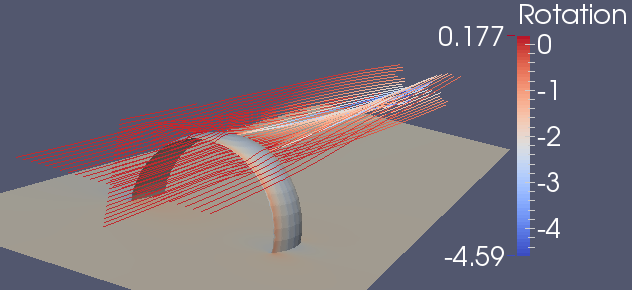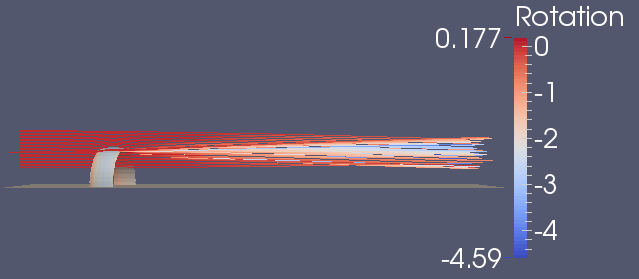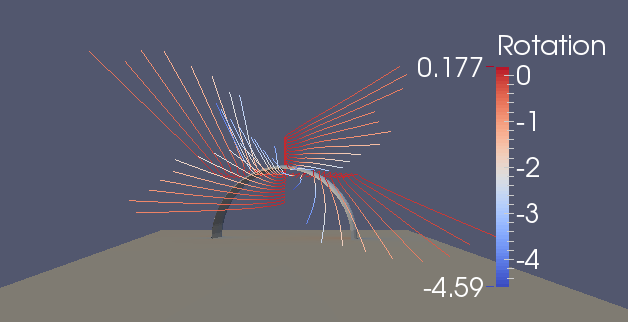Not one of the luminaries mentioned, not even close, but I tried the Wavegringer WG2 winglet fin in my single fin traditional longboards, all ready to skoff and dismiss it, but the first wave it was obvious the tail was locked in, and the board accelleration was quicker to its max speed, limited by tail rocker and soft rails in the tail. Super pivotal. There were times the fin seemed to dictate the line taken, and it would lock in and accellerate in certain parts of the wave, which required simply holding the line and slowly applying pressure before being able to really redirect. Basically, sometimes it tracks, while accellerating, a little bit like a car with no brakes going downhill. A bit thrilling, at times a bit reckless. Downturns into the pocket where where this was most noticeable. Weighing 215Lbs on average, I felt the WG2 is too flexy, as sometimes it would disconnect the rail when unweighting after a bottom turn, on my forehand. Backhand was not an issue.
After my sessions on th WG2, Going back to my traditional raked fin with the exaggerated tip was a letdown. I took it out and it has remained dry since. Its significantly higher surface area could not hold as well, and felt draggy and stiff in comparison, and i was a bit shocked. All this time… 30+ years of riding traditional longboards with ‘the bigger honking fin, the better’ mentality, and not knowing that it is such a limiting factor.
From there I Began trying Mr Mik’s high aspect ratio turbucle fins, and was again surprised. These were still quicker and looser than thay traditional raked fin, but did not have that blistering accelleration of the WG2. But they were also devoid of that tracking feeling of the WG2, and very forgiving. Happy go lucky fins that increased my desire to surf, and the amount of fun I had, and the waves made.
I have also tried the wavegrinder fins( fcs1 base) in my 6’11" which I consider my shortboard. I tried the bigger 5.7 inch deep fins on the rails, with the 4.7 inch center fin. I was not impressed. Dual foil rail fins seem to lack crispness and at times it seemed the winglets were simply at the wrong angle in realtion to my tail rocker and the rest of the board. I did like the smaller WG fin as a center fin, but could notice that same tendency as the larger WG2 in my LB, to track in certain parts of the wave face. The smaller fin felt just as big as a regular size thruster fin despite having some fraction of the surface area. I would like to try a smaller Wg winglet fin in my center probox, but returned a smaller high aspect center fin to it instead.
Using the smaller WG fins as rail fins, and there was not enough to push off of at slower speeds, they only seemed to engage once going faster, and they also lacked crispness when going form one rail to the other when going faster, and when I put my regular rail fins back in it felt right, again.
I am still not satisfied with my regualr rail fins on my shortboard. My going left rail fin is a TC Redline, and I really like it, Going right is the same template, plywood fin, with an ~80/20 foil. It lacks the crispness of the TC redline. I lost the righthand TC fin many years ago.
I really like the look of that brewer template fin you made, RDM. I have a fin panel waiting to be cut and foiled for new rail fins, and after your post last night, busted out the white cardboard and drew some templates, none of which I was happy with.
I am still torn though.
I would love to try some higher aspect turbucle fins on my shortboard. There is likely some speed threshold where the high aspect ratio and turbucles become draggier that what we are used to seeing in shortboard fins,. I do not think my traditional Longboard could attain those speeds ever, but shortboard certainly could, but that is a guess.
So it begs the quetion regarding fin efficiency. At what speed through water are we seeking that efficiency? The Wg fins in the shortboard did not wake up until some speed was generated, and once they did, I could not notice any speed or maneuverability gains, and they felt a bit squishy, and at times, tracky.
I can’t really hope to hand foil with any accuracy, turbucle fins, but their performance on my longboard has sparked my curiosity as to how they could perform on a shortboard, at least as a center fin.
They are incredibly forgiving when stalled. They do not instantly bust free when at their limit, and then nearly instantly reengage. I wonder what a top level surfer on a HPSB, could do with such a forgiving fin , which is also so speedy and happy go lucky, if those attributes translate into shortboard size fins and shortboarding. I really think this needs exploration.
The latest longboard fin I am hooked on is MrMiks Gullwhale fin. Super high aspect ratio and a pretty thin tip too. This fin has all the speed of the WG2, but no tracking. When it is stalled and loses grip, it does not lose all of its grip, and seems to be residing in a drag free pocket of its own making. Kind of a finless feeling, in that the tail is neither locked in, nor is there any feeling of drag. A few times I have had the lip crash right near the tail of my board going through the foamy wake of the previous wave, and the fin feels like it snapped off. Yet I maintain the angle before the lip crashed, and the speed, and yet the fin seems like it is gone, but the tail also does not simply slide out. Very unusual feeling when this occurs.
Anyway, I am wanting to make some rail fins for my 6’11" and the traditional fin, the black one on the right, no longer soothes any part of the visual cortex of my brain. That more Brewerish template fin you made, does, and I look forward to having some near my toes or heel in some head high plus waves, and the sooner the better.
Taking clues from Biomimickry, I am liking the shape of the pectoral fins of silky sharks and similar. High aspect ratio, narrow tips. Some videos of them on youtube, when they are exhiting their aggressive posture with pectoral fins almost straight downward, one can see definite similarities to the forces we subject our surfboard fins to. Much more so than the dorsal fin of a dolphin, or the tailfin of a bluefin tuna.








